Decoding Cell Dynamics: Mitosis to Healing & An Expert Guide
CHAPTER 5
Cell Cycle
INTRODUCTION:
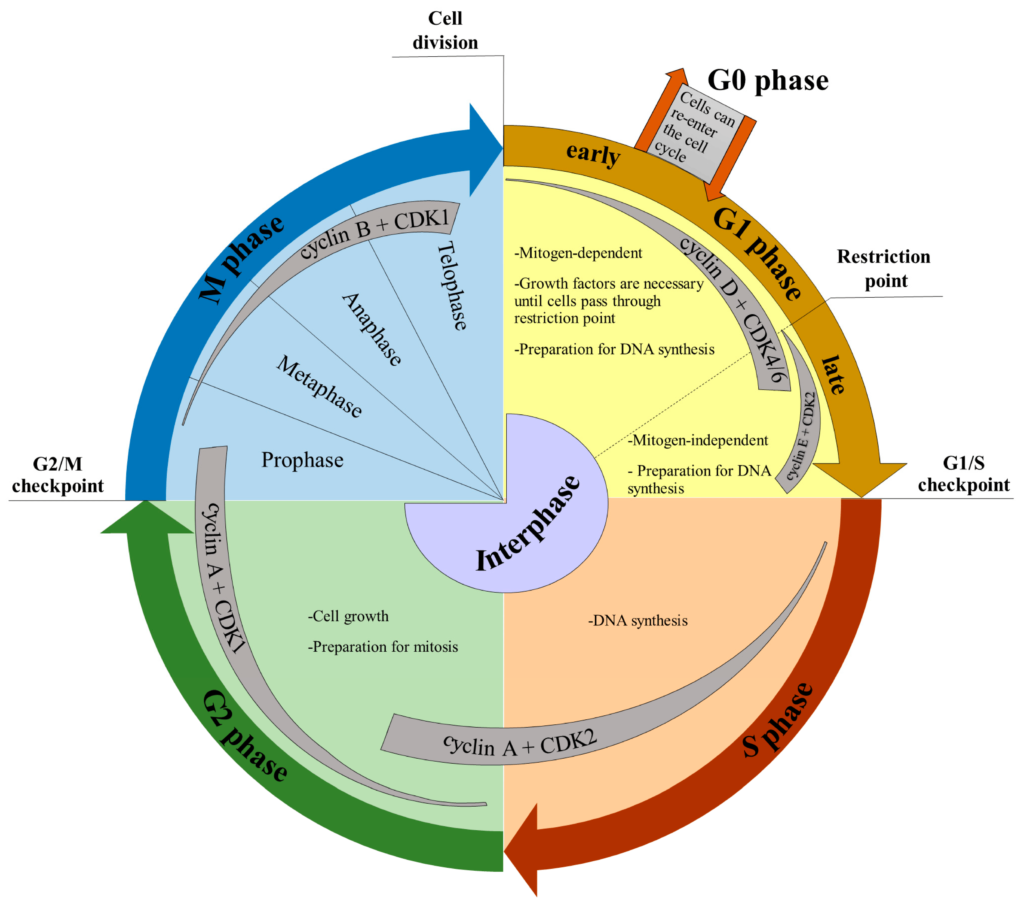
Picture a bustling city where each cell is like a tiny factory working tirelessly to keep life going. At the heart of this cellular city is the cell cycle—a remarkable series of events from the moment a cell is born until it completes its division mission.
The cell cycle has two main phases: the interphase and the mitotic phase (M phase). Interphase is like the cell’s preparation period, where it gears up for the big moment of division. It’s a bit like a chef gathering ingredients and getting everything ready before starting to cook up a storm.
Now, the mitotic phase is the short yet intense part of the cycle where the actual division happens. It’s like the grand finale of a fireworks show—it’s quick, dazzling, and essential for creating new cells.
Remember Rudolf Virchow? He introduced a crucial idea: “All cells come from cells.” This concept tells us that life’s continuation, especially reproduction, relies on cells continuously making more cells. It’s a bit like a never-ending chain of construction where cells build new versions of themselves.
Cellular reproduction, often called cell division, is at the core of this cycle. As a seed grows into a tree, cells replicate and multiply to keep living things growing and functioning.
Think of the cell cycle as a dance routine—a dynamic sequence of steps where cells prepare, divide, and then get ready to do it all over again. It’s a fundamental rhythm that powers life itself.
UNDERSTANDING THE CONCEPTS
Q1. What is the cell cycle and what are its main phases?
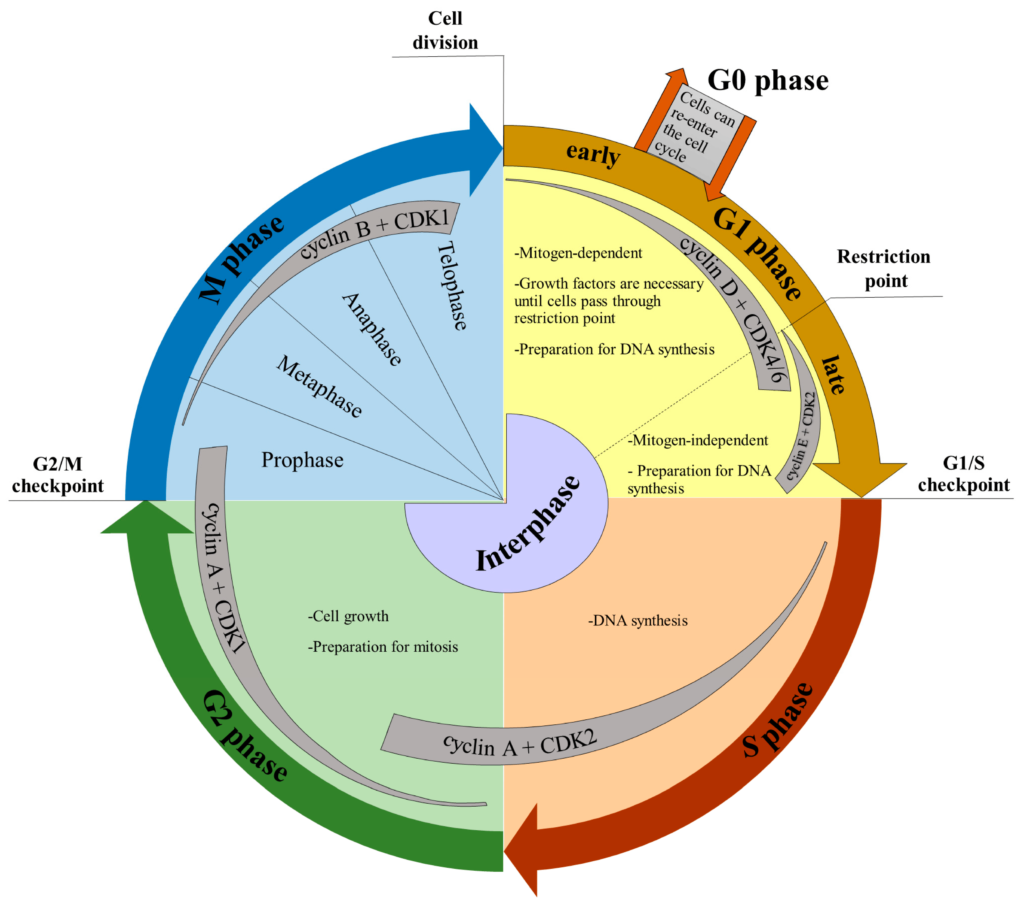
The cell cycle is a highly coordinated series of events that a cell undergoes from its formation to division into daughter cells. It consists of distinct phases, each with specific functions and characteristics.
1. Interphase:
- G1 Phase (Gap 1): This phase follows cell division (cytokinesis) and involves cellular growth, protein synthesis, and normal metabolic processes. The cell prepares for DNA replication.
- S Phase (Synthesis): Here, DNA replication occurs, leading to the duplication of genetic material. Each chromosome is replicated to form sister chromatids held together by a centromere.
- G2 Phase (Gap 2): Cell growth continues, and the cell prepares for mitosis. Proteins necessary for cell division are synthesized, and the cell checks for DNA errors before entering mitosis.
2. Mitotic Phase (M-phase):
- Mitosis: This phase is subdivided into several stages: prophase, metaphase, anaphase, and telophase. It involves the division of the cell’s nucleus.
- Prophase: Chromatin condenses into visible chromosomes, the nuclear envelope breaks down, and spindle fibers form.
- Metaphase: Chromosomes align along the cell’s equator (metaphase plate), and spindle fibers attach to the centromeres.
- Anaphase: Sister chromatids separate and move toward opposite poles of the cell.
- Telophase: Chromosomes decondense, new nuclear envelopes form around the separated chromatids, and cytokinesis begins.
- Cytokinesis: This is the physical division of the cell, occurring either concurrently with or immediately following telophase, resulting in two daughter cells.
Throughout the cell cycle, various regulatory checkpoints ensure that the cell progresses accurately through each phase and avoids errors that could lead to abnormalities or uncontrolled growth (cancer).
Interphase accounts for a significant portion of the cell cycle, during which the cell carries out its usual functions and prepares for division. Mitosis, on the other hand, involves the actual division of the genetic material and the cell itself.
The balance and coordination between these phases are critical for maintaining proper cellular function, growth, and reproduction in multicellular organisms.
Question 2: The S-phase of interphase is important and a cell can never divide without it. Justify.

Answer: The S-phase of interphase is a crucial stage in the cell cycle due to its involvement in DNA replication. This phase is indispensable for cell division, and several reasons substantiate its significance:
- DNA Duplication: During the S-phase, the cell meticulously duplicates its entire genome. Each chromosome is replicated, resulting in the formation of identical sister chromatids held together by a centromere. This duplication is fundamental as it ensures that each daughter cell receives an exact copy of the genetic material.
- Genetic Information for Daughter Cells: The replicated DNA in the form of sister chromatids contains the complete set of genetic instructions necessary for the proper functioning and development of the new cells. Without this accurately duplicated genetic material, the division process cannot proceed effectively.
- Foundation for Chromosome Segregation: In subsequent phases of the cell cycle, such as mitosis or meiosis, the duplicated chromosomes are separated and segregated into daughter cells. Without the S-phase, where DNA replication occurs, there would be an insufficient number of chromosomes or errors in their structure, leading to severe abnormalities during segregation.
- Maintenance of Genetic Stability: DNA replication during the S-phase ensures the fidelity and stability of the genetic material. Any deficiencies or inaccuracies in this phase could result in mutations, genomic instability, or incomplete information transfer to the progeny cells.
Therefore, the S-phase is an indispensable prerequisite for cell division. Without the DNA replication occurring during this phase, the cell lacks the essential genetic material required to pass on to its offspring, impeding the entire process of cell division and compromising the integrity of subsequent stages in the cell cycle.
Question 3: How would you describe the events of prophase during mitosis?
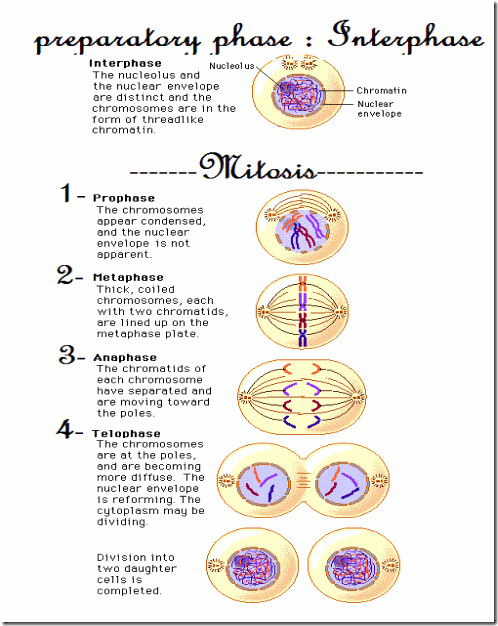
Answer: Prophase, the initial stage of mitosis, is characterized by a series of critical events that prepare the cell for the division of its nucleus. The key events during the prophase include:
- Chromatin Condensation: The chromatin, a loosely packed form of DNA and associated proteins, undergoes significant condensation during prophase. This condensation results in the visible formation of chromosomes. Each chromosome consists of two identical sister chromatids held together by a centromere.
- Nuclear Envelope Breakdown: As chromatin condenses into distinct chromosomes, the nuclear envelope, which separates the nucleus from the cytoplasm, starts to disintegrate. This breakdown allows the spindle apparatus to access the chromosomes and facilitates their movement during subsequent stages of mitosis.
- Spindle Fiber Formation: Protein structures called spindle fibers or microtubules begin to emerge from specialized structures called centrosomes (or spindle poles) located at opposite ends of the cell. These spindle fibers extend and form a network throughout the cell, contributing to the organization and movement of chromosomes.
- Chromosome Attachment to Spindle Fibers: As prophase progresses, the chromosomes, now highly condensed and visible under a microscope, start to interact with the spindle fibers. Protein structures known as kinetochores, located at the centromeres of chromosomes, attach to the spindle fibers. This attachment is crucial for the precise alignment and eventual separation of chromosomes during later stages of mitosis.
Overall, prophase marks the initiation of mitosis and sets the stage for the orderly division of genetic material. It involves the dramatic structural changes within the nucleus, the organization of the spindle apparatus, and the preparation of chromosomes for their proper alignment and segregation in subsequent stages of mitosis.
Question 4: Can you provide a detailed list of the events that occur during mitosis?

Answer: Mitosis, a crucial process for cell division, consists of several distinct stages, each with specific events and functions:
- Prophase:
- Chromatin Condensation: The chromatin undergoes condensation, becoming visible as distinct chromosomes.
- Nuclear Envelope Breakdown: The nuclear envelope disintegrates, allowing spindle fibers access to the chromosomes.
- Spindle Fiber Formation: Microtubules extend from centrosomes, forming the spindle apparatus.
- Chromosome Attachment: Chromosomes attach to spindle fibers via their kinetochores.
- Metaphase:
- Chromosome Alignment: Chromosomes align at the cell’s equatorial plane, known as the metaphase plate.
- Spindle Fiber Attachment: Each chromosome is attached to spindle fibers from opposite poles via its kinetochore.
- Anaphase:
- Chromosome Separation: Sister chromatids (formed during DNA replication) separate and move towards opposite poles of the cell.
- Poleward Movement: Spindle fibers shorten, pulling chromatids apart, ensuring each new cell will receive a complete set of chromosomes.
- Telophase:
- Chromosome Decondensation: Chromosomes begin to decondense, reverting to a less condensed chromatin state.
- Nuclear Envelope Formation: New nuclear envelopes start to form around the separated chromatids at each pole.
- Spindle Disassembly: Spindle fibers disassemble, and the cell prepares for cytokinesis.
- Cytokinesis:
- Cell Division: The cytoplasm divides, forming two distinct daughter cells. In animal cells, this often involves the formation of a cleavage furrow, while in plant cells, a cell plate develops to separate the cells.
These sequential stages ensure the precise and equal distribution of genetic material to daughter cells, ensuring that each new cell receives a complete and identical set of chromosomes. Mitosis plays a pivotal role in growth, repair, and asexual reproduction in multicellular organisms, ensuring the maintenance of the correct chromosome number in daughter cells.
Question 5: What is the significance of mitosis in cellular processes?
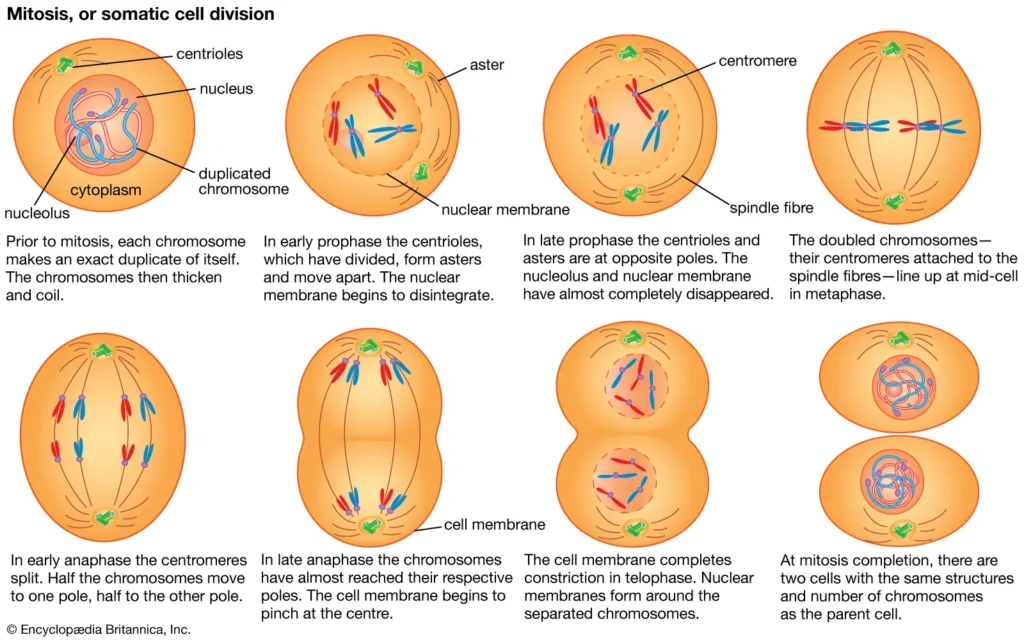
Answer: Mitosis plays a pivotal role in various aspects of growth, development, and tissue maintenance in multicellular organisms due to its significant contributions:
- Genetic Stability: Mitosis ensures the accurate distribution of identical copies of DNA to daughter cells. This process guarantees that each resulting cell possesses a complete and precise set of chromosomes, maintaining genetic stability across generations.
- Cellular Growth: In multicellular organisms, mitosis facilitates growth by enabling cells to proliferate. It allows for the increase in cell number necessary for the development and enlargement of tissues and organs during embryonic growth and throughout an organism’s life.
- Tissue Repair and Maintenance: Mitosis is crucial for tissue repair and regeneration. After injuries or damage, cells undergo mitosis to replace and replenish damaged or lost cells, aiding in wound healing and the restoration of tissue integrity.
- Developmental Processes: During development, mitosis is essential for the formation of specialized cell types and the overall organization of tissues and organs. Controlled cell division ensures the proper formation and arrangement of cells necessary for the development of complex structures.
- Asexual Reproduction: In some organisms, mitosis is involved in asexual reproduction, allowing for the generation of offspring that are genetically identical to the parent. This occurs in various organisms such as plants, some invertebrates, and single-celled organisms.
- Maintenance of Chromosome Number: Mitosis ensures that the chromosome number in daughter cells remains the same as that of the parent cell. This preservation of chromosome number is vital for the proper functioning and stability of cells and tissues within an organism.
Overall, mitosis plays a fundamental role in maintaining the structural integrity of organisms, ensuring proper growth, repair, and development. Its accuracy in distributing genetic material contributes significantly to the overall health and functioning of multicellular organisms.
Question 6: What are the events that take place during the phases of meiosis I?

Answer: Meiosis I, the first stage of meiosis, involves a series of distinct phases, each crucial for the reduction of chromosome number and the generation of genetic diversity:
- Prophase I:
- Leptotene: Chromosomes condense, becoming visible under a microscope. The homologous chromosomes pair up (synapsis), forming tetrads (bivalents).
- Zygotene: Synapsis continues, and the synaptonemal complex forms, facilitating the exchange of genetic material through crossing over (genetic recombination).
- Pachytene: Crossing over occurs, leading to the exchange of genetic material between homologous chromosomes. This process enhances genetic diversity.
- Diplotene: Homologous chromosomes begin to separate slightly but remain attached at points called chiasmata, where crossing over occurs.
- Diakinesis: Chromosomes complete condensation, and the nuclear envelope begins to break down, marking the end of prophase I.
- Metaphase I:
- Homologous Chromosome Alignment: Homologous chromosome pairs align along the equatorial plane of the cell. Each pair attaches to spindle fibers from opposite poles.
- Anaphase I:
- Homologous Chromosome Separation: Homologous chromosomes separate and move to opposite poles of the cell, guided by spindle fibers. Sister chromatids remain attached at their centromeres.
- Telophase I:
- Chromosome Movement Completes: Chromosomes arrive at opposite poles, and the nuclear membrane may reform around the separated chromosomes.
- Cytokinesis: The cell divides, forming two daughter cells, each containing a haploid set of chromosomes, with each chromosome consisting of two sister chromatids.
Meiosis I is significant because it results in the reduction of chromosome number by half (from diploid to haploid) and introduces genetic variability through crossing over and the random assortment of homologous chromosomes. The phases of meiosis I ensure the production of genetically diverse gametes necessary for sexual reproduction and contribute to the variability seen in offspring.
Q7. Describe the significance of meiosis.

Answer: Meiosis, a specialized form of cell division, holds immense significance in sexual reproduction and contributes to genetic diversity in several ways:
- Generation of Haploid Gametes: Meiosis reduces the chromosome number by half, producing gametes (sperm and eggs in animals, pollen, and ovules in plants) with a haploid set of chromosomes. This reduction is crucial because, during fertilization, when gametes fuse, the resulting zygote restores the diploid chromosome number, ensuring the species’ characteristic chromosome count.
- Introduction of Genetic Variation: Meiosis introduces genetic diversity through two primary mechanisms:
- Crossing Over: During prophase I, homologous chromosomes exchange genetic material, leading to recombination. This process creates novel combinations of alleles on chromosomes, enhancing genetic diversity.
- Independent Assortment: During metaphase I, homologous chromosome pairs align randomly at the cell’s equatorial plane. Their separation during anaphase I occurs independently of other pairs, resulting in a vast number of possible combinations of chromosomes in gametes.
- Enhancement of Evolutionary Potential: Genetic diversity generated by meiosis is crucial for adaptation and evolution. It provides a wide range of genetic traits within a population, enabling organisms to better cope with changing environments. Variability resulting from meiosis allows for natural selection to act upon diverse traits, promoting survival and adaptation.
- Prevention of Genetic Overload: Meiosis helps maintain a stable chromosome number across generations. Without this reduction in chromosome number, the doubling of chromosomes in each successive generation would lead to genetic overload and instability in the species.
- Facilitation of Genetic Recombination: Meiosis enables the shuffling and exchange of genetic material between homologous chromosomes. This process is vital for genetic recombination, promoting the creation of new combinations of alleles that contribute to an organism’s adaptability and variability.
Overall, the significance of meiosis lies in its role in sexual reproduction, the generation of genetically diverse gametes, and the introduction of variation crucial for species survival, adaptation, and evolution. It serves as a fundamental process in the continuity and diversity of life on Earth.
Q8. Contrast mitosis and meiosis, emphasizing the events that lead to different outcomes.
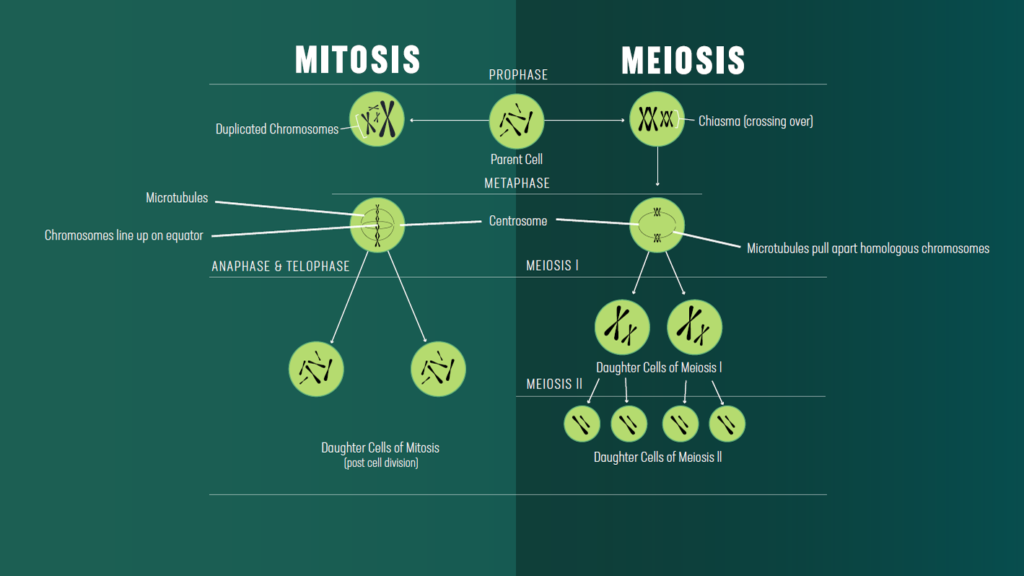
Answer: Mitosis and meiosis are two types of cell division processes, each serving specific purposes and resulting in different outcomes due to variations in their key events:
- Purpose:
- Mitosis: Mitosis is involved in growth, repair, and asexual reproduction. It produces two identical diploid daughter cells, each with the same chromosome number as the parent cell.
- Meiosis: Meiosis, on the other hand, is specialized for sexual reproduction. It generates four genetically diverse haploid gametes, each containing half the chromosome number of the parent cell.
- Number of Divisions:
- Mitosis: Mitosis involves one division of the cell, resulting in the formation of two daughter cells.
- Meiosis: Meiosis consists of two consecutive divisions, meiosis I and meiosis II, resulting in the production of four daughter cells.
- Chromosome Number:
- Mitosis: The chromosome number remains constant; the daughter cells are genetically identical to the parent cell and are diploid (having the same number of chromosomes).
- Meiosis: The chromosome number is halved during meiosis I, resulting in haploid daughter cells. Each daughter cell possesses only one set of chromosomes (half the number of chromosomes found in the parent cell).
- Genetic Diversity:
- Mitosis: Mitosis does not introduce genetic diversity since the daughter cells are identical to the parent cell, maintaining genetic continuity.
- Meiosis: Meiosis introduces genetic diversity through crossing over during prophase I and independent assortment during metaphase I. These processes shuffle genetic material, creating genetically unique gametes.
- Events Leading to Different Outcomes:
- Mitosis: In mitosis, one division occurs, and the sister chromatids separate during anaphase, resulting in two identical daughter cells with the same chromosome number as the parent cell.
- Meiosis: Meiosis involves two divisions. During meiosis I, homologous chromosomes pair up, cross over, and separate, reducing the chromosome number by half. In meiosis II, sister chromatids separate similarly to mitosis, resulting in the formation of four haploid daughter cells.
The contrasting outcomes of mitosis and meiosis stem from the differences in their processes: the number of divisions, chromosome number changes, and the introduction of genetic variation, all essential for their respective roles in growth, repair, and sexual reproduction.
Q9. Describe necrosis and apoptosis.
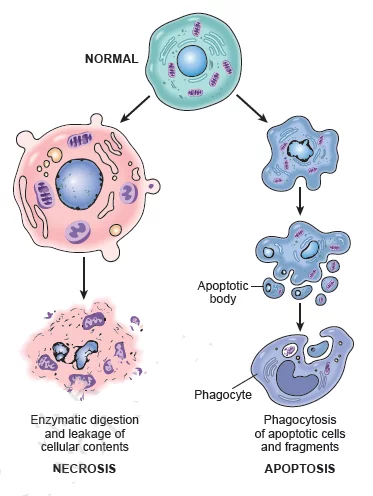
Answer: Necrosis and apoptosis are two distinct mechanisms of cell death, each characterized by different causes, processes, and implications:
- Necrosis:
- Cause: Necrosis is typically triggered by external factors such as trauma, infection, toxins, or lack of oxygen (ischemia). It often results from acute, uncontrolled cellular damage.
- Process: Necrosis involves a rapid and unregulated process where cells swell, rupture, and release their contents into the surrounding tissue. This can cause inflammation and damage neighboring cells, potentially triggering an immune response.
- Appearance: Under a microscope, necrotic cells show structural disorganization, cell swelling, and disruption of cellular organelles. The cell membrane integrity is compromised, leading to cell lysis.
- Consequences: Necrosis often leads to an inflammatory response due to the release of cellular contents, potentially causing damage to surrounding tissues. It’s associated with pathological conditions, and tissue damage, and can be detrimental to overall tissue health.
- Apoptosis:
- Cause: Apoptosis, also known as programmed cell death, is a highly regulated process essential for normal development, tissue homeostasis, and eliminating unwanted or damaged cells.
- Process: Apoptosis involves a series of controlled cellular events orchestrated by specific signaling pathways. It begins with cell signaling that triggers internal mechanisms leading to cell shrinkage, DNA fragmentation, and the formation of membrane-bound apoptotic bodies.
- Appearance: Apoptotic cells exhibit characteristic changes such as cell shrinkage, chromatin condensation, nuclear fragmentation, and the formation of apoptotic bodies containing cellular debris.
- Consequences: Apoptosis is a controlled and non-inflammatory process that removes cells without causing damage to neighboring cells. It’s crucial for normal physiological functions like tissue remodeling during development, immune system regulation, and the elimination of damaged or potentially harmful cells.
In summary, necrosis is an uncontrolled and often pathological form of cell death resulting from external factors, leading to inflammation and tissue damage. In contrast, apoptosis is a tightly regulated and programmed process that eliminates cells without causing inflammation, contributing to normal development, tissue turnover, and maintaining tissue homeostasis in multicellular organisms.
Short Questions Answers
Q1. A nerve cell does not divide after its formation. In which phase of the cell cycle is it?
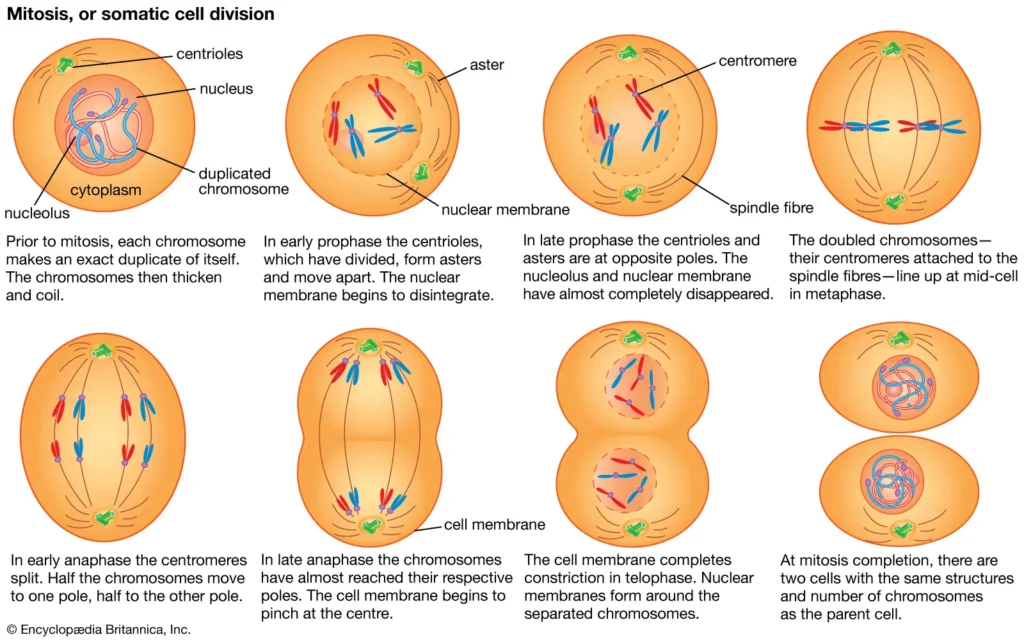
A nerve cell, after its formation, stays in the G0 phase of the cell cycle, a quiescent phase where it remains metabolically active but does not undergo cell division.
Q2. How is cytokinesis different in plant cells compared to animal cells?

Cytokinesis in animal cells involves the formation of a cleavage furrow, pinching the cell into two. In contrast, plant cells form a cell plate between the dividing cells, derived from vesicles containing cell wall materials, ultimately leading to the creation of a new cell wall and membrane.
Q3. What type of cell division occurs when our wounds are healed?
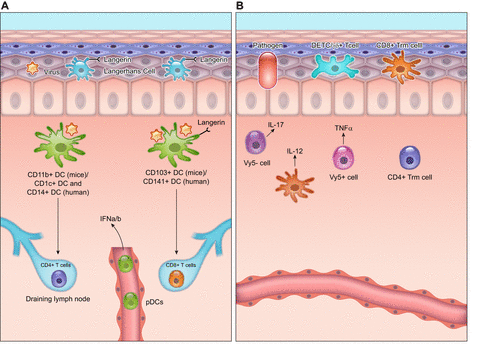
Wound healing primarily involves mitotic cell division, particularly in cells near the injury site. Mitosis allows for the rapid multiplication of cells to replace damaged or lost cells and facilitate tissue repair.
Q4. Plants do not make their gametes by meiosis. How is that?

Plants use meiosis to produce their gametes. The process occurs within specialized structures like the anthers (producing pollen in male structures) and ovules (producing eggs in female structures). Meiosis in plants is fundamental for generating haploid gametes necessary for sexual reproduction, just like in animals.
In the realm of cellular dynamics, comprehending the mechanisms governing cell division, death, and healing illuminates the remarkable intricacies of life at its most fundamental level. Mitosis and meiosis stand as pillars, one ensuring genetic stability and tissue growth, while the other fosters genetic diversity crucial for reproduction. The contrasting pathways of necrosis and apoptosis underscore the significance of controlled cell death in maintaining tissue health. Wound healing showcases the regenerative prowess of mitotic cell division in swiftly repairing damaged tissues. Even in plant cells, unique cytokinesis and employment of meiosis for gamete production contribute to genetic variation. Delving into these mechanisms not only unravels the symphony orchestrating our biological existence but also lays the foundation for advancements in various fields, illuminating the intricacies that govern life’s continuity and diversity.
3 comments